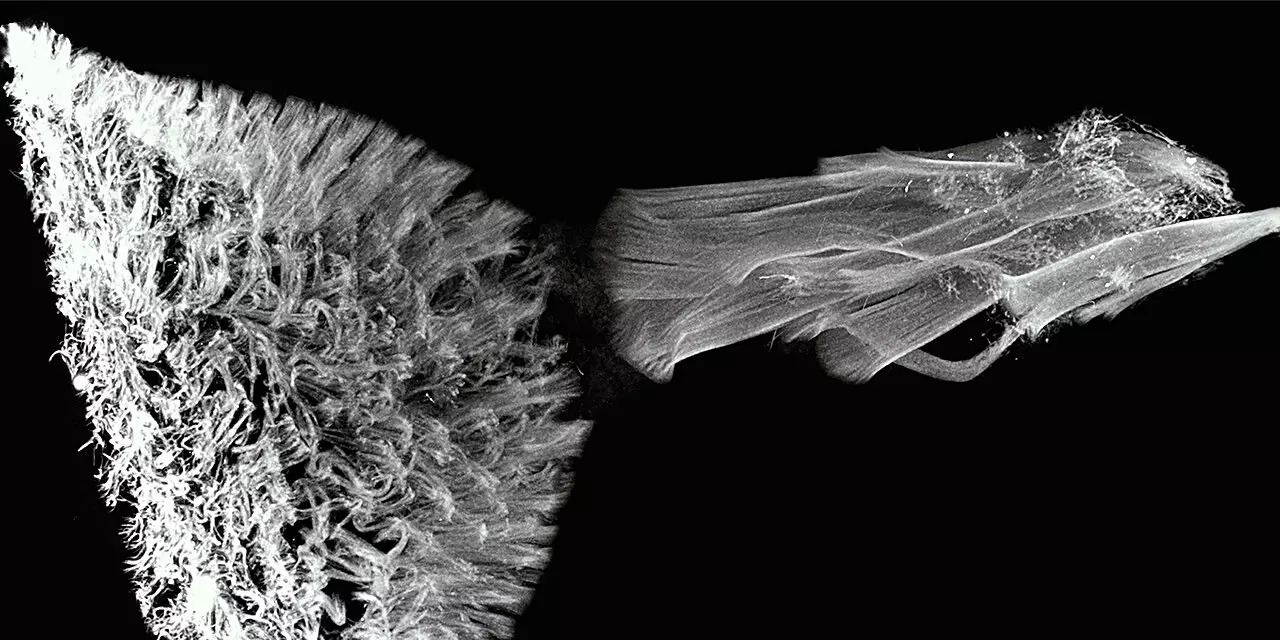The history of science is not merely a catalog of facts but a rich tapestry woven from shifts in paradigms, where once-accepted theories crumble in the wake of groundbreaking discoveries. These shifts are often met with resistance, yet they are essential in the pursuit of knowledge. The Kanso Bioinspired Motion Lab at USC Viterbi School of Engineering stands out as a pioneering force, consistently challenging established norms. Their latest research, recently published in *Nature Physics*, represents a significant leap forward in our understanding of ciliated organs and fluid dynamics—a leap that could reshape both biological and medical fields.
Unveiling the Connection Between Designs
The lab’s paper, “Flow physics guides morphology of ciliated organs,” delves into the intricate relationship between two distinct mechanisms for pumping fluids in multicellular organisms: the “flame” model and the “carpet” model. Humans and many animals utilize cilia, hair-like structures that assist in fluid transport across various systems. While humans display the compact, layered “carpet” structure in ciliated tissues—ranging from our airways to reproductive organs—other creatures sport the elongated and tightly packed “ciliary flame” configuration. What’s compelling here is the realization that these two morphologies are not merely products of evolutionary divergence but are adaptations to distinct hydraulic requirements.
Recent work led by Professor Eva Kanso and her talented team, including USC Ph.D. student Feng Ling and research scientist Janna Nawroth, uncovers the underlying mechanics that dictate these differing structures. Their hypothesis that the evolutionary pathways of these organs have been misleading establishes a stunning new framework that positions function as the driving force behind form. It challenges entrenched beliefs and opens the door to a fresh dialogue about how we interpret evolutionary biology in relation to fluid dynamics.
A Unified Fluid Dynamics Model
The authors propose a groundbreaking unified fluid model that finds cohesion in these seemingly contrasting structures. By analyzing two key structural parameters—lumen diameter and cilia-to-lumen ratio—they articulate a continuous spectrum of ciliated duct designs that connect carpets to flames. This paradigm suggests a more fluid (pun intended) approach to understanding biological systems, where extremes of form serve particular physiological needs, and hybrid designs could provide optimal solutions for efficient fluid transport.
At the extremes of this spectrum, we see maximized flow rates and enhanced pressure generation, fulfilling the critical functions necessary for bulk transport and filtration. As one moves toward the middle of the spectrum, the study suggests that hybrid forms emerge, which may offer advantageous efficiencies that could redefine what we consider the ‘ideal’ design. The notion that such hybrid systems can exist challenges long-held assumptions about biodiversity and opens new avenues for research.
Implications for Medicine and Beyond
The implications of these findings extend far beyond theoretical biology. As the paper elucidates, a clearer understanding of cilia morphology and function can influence the management of various health challenges associated with cilia dysfunction. Diseases like bronchiectasis, hydrocephalus, and even conditions related to ectopic pregnancies highlight the critical role cilia play in human health.
Moreover, this understanding allows researchers to adopt these insights to study specific organs with newfound clarity. For example, the ciliary flame model’s function in excretion provides a robust framework for investigating human kidney diseases. The potential for translating this research into practical medical applications cannot be overstated.
Innovative Methodologies That Break New Ground
The challenges inherent in studying ciliated organs—specifically, measuring ciliary beat patterns and fluid flow in a live organism—have long confounded researchers. However, the innovative combination of experimental techniques and mathematical modeling employed by the Kanso Lab offers a comprehensive strategy that surmounts previous limitations.
By proposing that anatomical distinctions should be viewed less as mutually exclusive and more as part of a continuum, they simplify a daunting complexity within the realm of science and engineering. In the process, they pave the way for further explorations that can refine our understanding of biological systems and inspire solutions to both existing and emerging challenges. Thus, the Kanso Bioinspired Motion Lab’s contributions not only illuminate the secrets of nature but also point toward a future where science continues to unravel the complexities of life.

